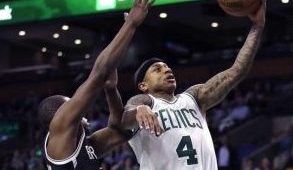

Athletes are a commodity. Their performance, training methods and even downtime has become more detailed science than athletic artistry. With wearable and data technologies, sports are showing a rise in audience interaction and a lowered expectation of privacy for players. Some of them are beginning to feel more like lab cases than athletes.
Brian Bulcke, a defensive lineman in the Canadian Football League, says, “I feel like a guinea pig sometimes when we talk about athletes and technology, and I stress that we’re people too.” Bulcke continues, “We’re professionals, so I think the respect line on privacy, security and all that kind of stuff needs to be maintained in athleticism, despite being entertainment.”
Because the Canadian lineman works as a business development lead for a program that mentors tech companies at Ryerson University in Toronto during off-season, he can speak directly to both sides of the struggle. Part engineer, part athlete, Bulcke is attempting to develop tech that takes the ‘guinea pig equation’ out of the locker room. However, he believes it will ultimately come down to athletes playing a more active role in the conversation about the ubiquitous uprising of tech in sports.
“It’s the athletes and the people on the frontlines that will help define the industry. We’re the early adopters but we’re also a megaphone for the rest of the athletes in the market,” adds Bulcke. “Over the years we’ll see more and more athletes permeate into the wearables space.”
His advice is for players to give pushback if the lines between personal and professional tracking becomes muddy.
“I do think there’s a line there, and we focus purely on when you’re at the workplace, and the workplace for athletes is when you’re practicing or playing games or doing rehab and assessments,” said Brian Kopp, president of the North American division of Catapult, an Australian company whose wearable devices are used in major league teams in the NFL, NHL, MLB, NBA and college-level sports programs. “When you go home and you’re doing whatever on your own time, you’re not wearing our device […]”.
But what is most disconcerting to athletes? The more metrics and tracking big-data algorithms, the higher the likelihood for negative salary negotiations based on performance data during very specific training sessions. In other words, players aren’t allowed bad days — big data is always watching and recording. Sports fans have very little sympathy. According to a portion of fans, players as entertainers who make inordinate salaries; if tracking enhances the audience experience, it’s justified.
“The insights that come from the data that evolve and advance the story and make the game potentially more interesting for fans – that’s where I see one of the big opportunity areas, and we’re already starting to see that,” says Stacey Burr, vice-president and general manager of Adidas’s digital sports business unit. “I don’t know how that whole world works, to be honest with you; we’re just providing facts and figures, and I think there’s somebody else that has a set of mental models that they use in terms of what the future opportunities are for individual players.”
Wearable technology continues to generate massive global revenue for sports, fitness and activity monitors. As the wearable tech industry is expected to grow from $1.9bn in 2013 to $2.8bn in 2019 (according to analytics firm IHS), the sports tech versus privacy subject will most likely heat up as well.